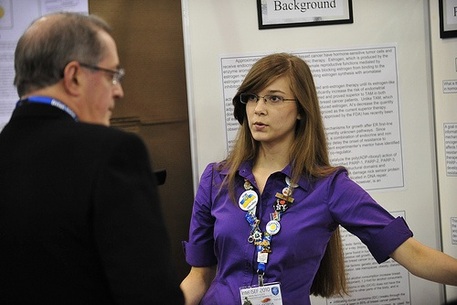
We have a guest contribution today from Brian Cronquist, MonolithIC 3D Inc.'s VP of Technology. Brian shares his perspective on the "education and immigration debate" that's been happening on our blog the last two Thursdays...
Here are a few observations and actions from my 32 years in high-tech, six of which were living in Singapore, the remainder in Silicon Valley.
First, what is STEM? According to Wikipedia, the acronym STEM stands for science, technology, engineering, and mathematics. The STEM fields are those academic and professional disciplines that fall under the umbrella areas represented by the acronym. According to both the United States National Research Council and the National Science Foundation, the fields are collectively considered core technological underpinnings of an advanced society. In many forums (including political/governmental and academic) the strength of the STEM workforce is viewed as an indicator of a nation's ability to sustain itself.
K-12
I’ll start with K-12, and in later blogs talk about College and Industry. K-12 sets up what we get in those later years. …
I have been judging at local science fairs on and off for about 30 years now, as well as having participated in them as a student (too many years ago to confess to) and there are some dramatic differences between then and now. Overall, there are a lot fewer students participating in them, especially from the public schools. (A notable exception to this trend is the local sciencepalooza! sponsored by the Synopsys Outreach Foundation and pulls from entire the disadvantaged San Jose East Side School District) As well, the engineering sections have grown, and the basic science sections have shrunk. There seems to be fewer of the fundamental questions being asked and more of the applied solutions to known problems being attempted. My view is that this shift is a good development, as long as we can maintain a strong core of basic researchers asking the fundamental questions.
Science fairs are generously populated with ‘high-end’ and ‘type-A’ students who are very competitive and are (sometimes) doing very high level and aggressive projects & topics. The top competitions are now mostly filled by children of immigrants, either first or second generation. This immigrant heavy composition, of course, persists at the international competitive level where I have seen the quality from both the US and outside of the US dramatically improve. At the top levels, the US is still winning many awards. And sometimes there are second and third generation US born students winning these medals and scholarships. But they are few and far between.
A couple of comments: First, it is vitally important to expand the number of K-12 students ‘getting dirty’ with science. There are some ‘diamonds in the rough’ in every one of our schools across the country. We need to encourage/excite a broader cross-section of the US students to enjoy the discovery of scientific invention. Mentorship, science fairs, helping school clubs, talking about your career, taking kids on tours, etc. are pathways. I’ll talk about a few examples in the next section. I think that one of the best ways to accomplish this is that each of us, as practicing scientists and engineers, spread the excitement we have about science to our kids, our kids’ friends, and their classrooms. Also, as a country, we need to continue, and do a better job of, keeping our most highly educated foreign students (eventual parents) in the US. Fresh energy and culture can motivate those ‘watching’ to start ‘doing’. It’s been a strength of the US for her entire life.
If you want to help out with science fairs, here’s the links for IISEF (Intel International Science & Engineering Fair), California State Science Fair, and the Synopsys Championship (the Santa Clara County Regional Fair). Below is a young lady who is describing her project to an IISEF judge.
And yet, there is much more to do even in this program and resource rich environment….only about 5% of the students in the high school are engaged in AMSE, the deeper curriculum and program that can produce technology creators and not just technology consumers.
At the one on one level, I have had the opportunity to tutor (and occasionally teach) many high school and junior high students over the years, mostly in chemistry, physics, and math. It is clear that there are two main reasons why they struggle. One, they are missing fundamental building blocks somewhere earlier in that discipline. It may be due to sickness (theirs or a relatives), disinterest at that time, poor (usually non-enthusiastic/confident) teacher, bad home environment from divorce or economics, family moves& school changes, etc. The second, they have a large number of current distractions in their lives, with the information overload coming at them from all different directions (cellphones, computers, smart phones, Facebook, Twitter, etc.). Whether for the former or the latter, they feel overwhelmed. My point: Science is hard work. It needs focus. It demands focus. What have I found that can (not always) help solve this? Pass on the excitement, curiosity, and wonder of the subject. Share not just the What, but also the How and Why.
Hey, and isn’t that why we became scientists and engineers? We were focused and overcame the distractions because we were excited about the subject or task, saw wonder in the result and the connections, were curious about what made ‘it tick’, and maybe saw this in somebody else.
Share that wonder with someone younger than you today.
BC
As I tell many of the STEM students I have met: “I have a selfish interest in helping you to be the best engineer and scientist you can be: you may likely invent something that saves or extends my life when I am 80…. I want it to work!”










 RSS Feed
RSS Feed